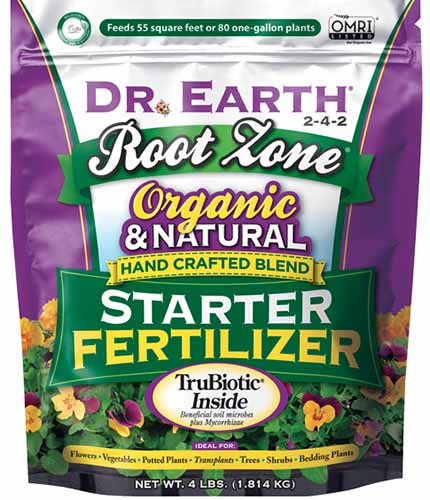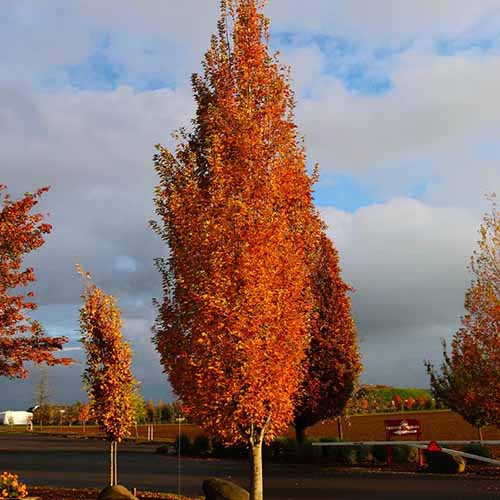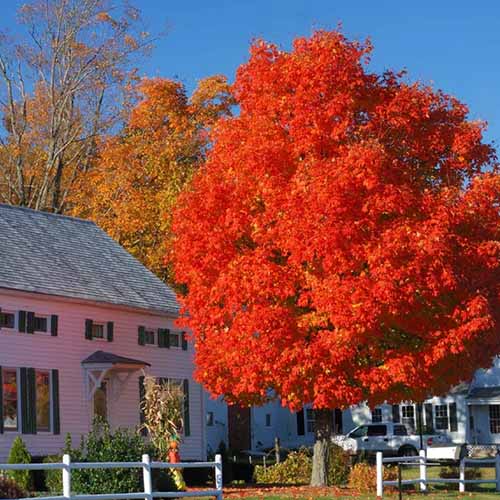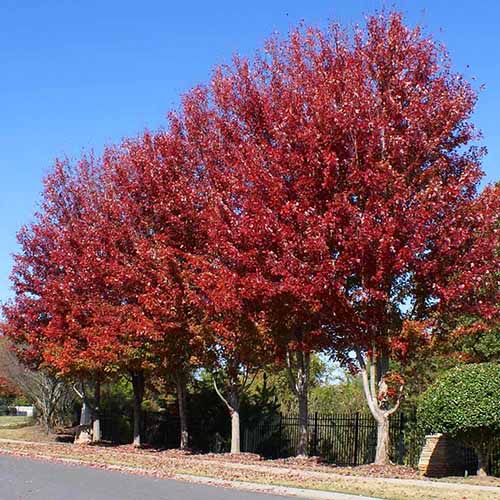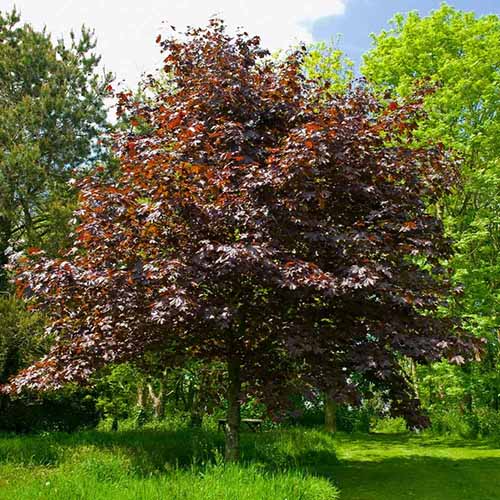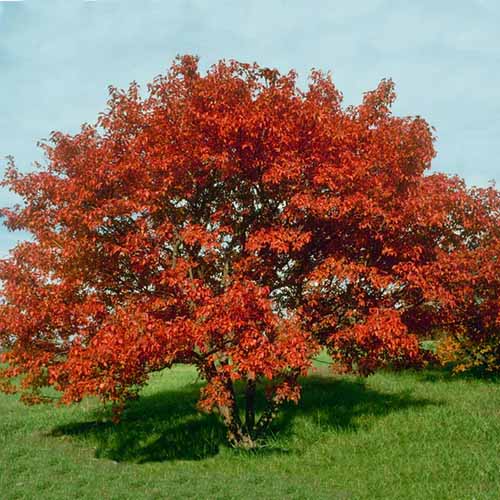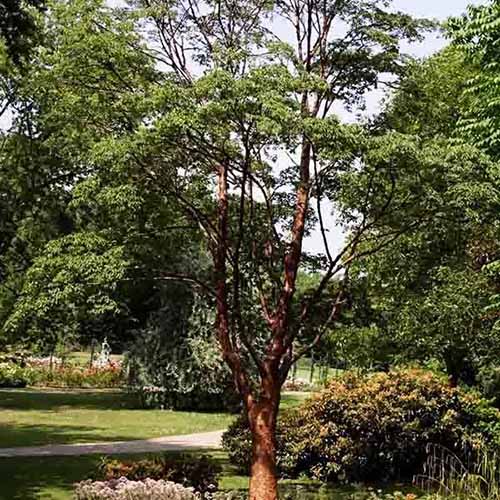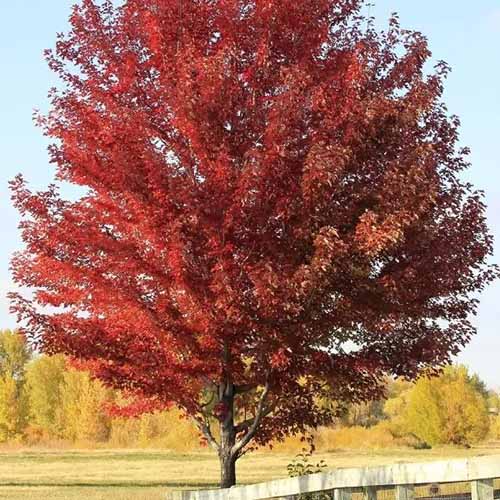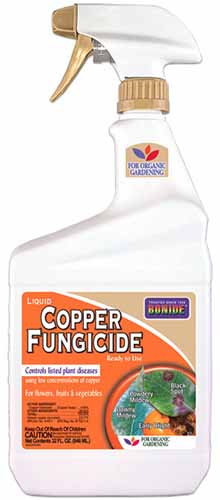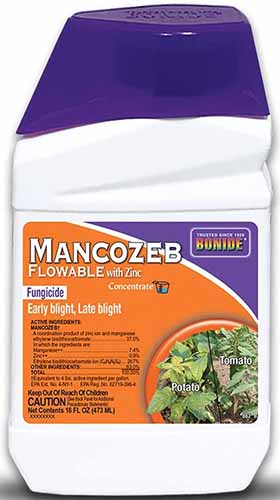How to Grow and Care for Maple Trees
Acer spp.
A lazy day under the shade of a leafy tree. Digging into a big plate of pancakes covered in syrup. An elegant, bright red focal point in a shady garden. Maples give us so much.
While the Japanese species take a lot of the limelight, the hardworking red, silver, sugar, big leaf, and paperbark maples are humbly offering up their vibrant foliage and sweet sap to practically anyone in a temperate climate.
There’s a lot of diversity in the Acer genus, which means no matter your decorative garden needs, there’s probably a tree in the maple world that fits the bill.
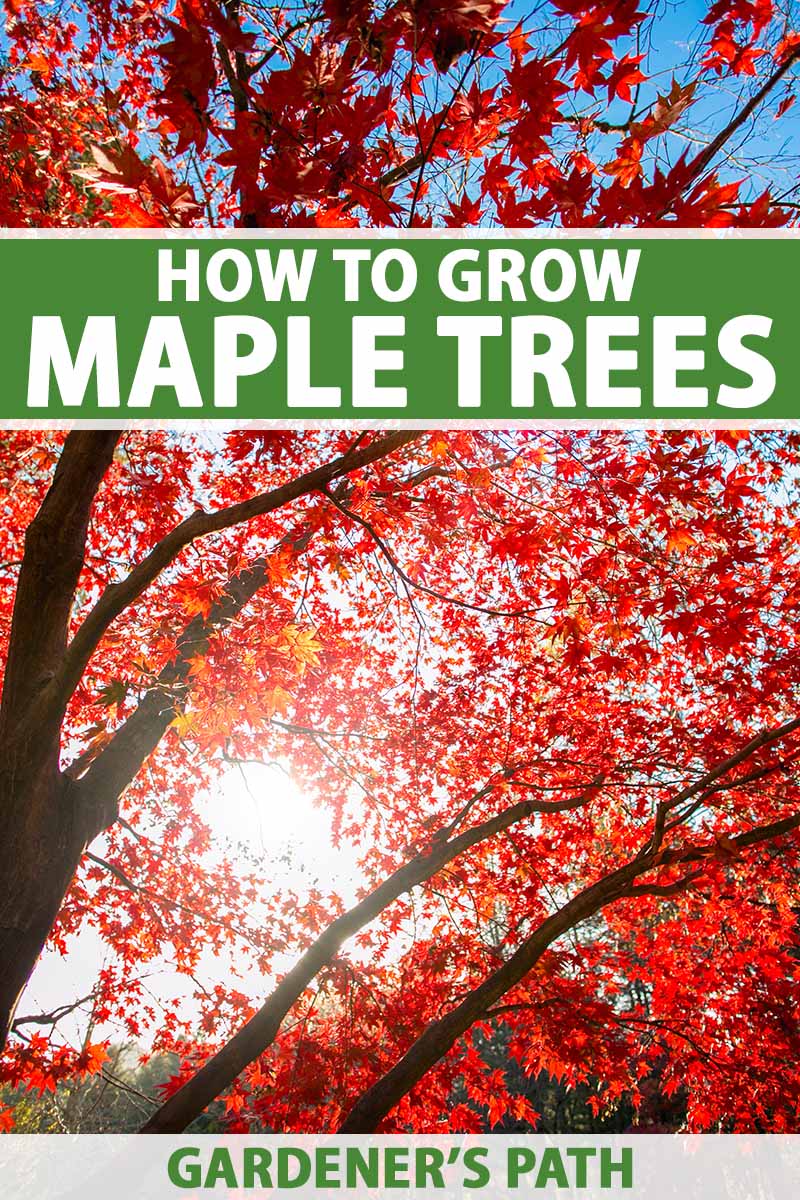

We link to vendors to help you find relevant products. If you buy from one of our links, we may earn a commission.
It’s hard not to love this group of plants. They’re adaptable, sturdy, long-living, and give you a big bang for your buck. I mean, what would fall be without those neon red leaves?
To help you understand the many options and figure out which will work best for you, we’re going to discuss the following:
What You’ll Learn
Many are much quicker, but some maples take up to 30 years to mature – so we don’t have any time to waste! Let’s dive right in.
What Are Maples?
This might sound like a silly question, but everyone pictures something different when they imagine a maple.
Some people see pretty silver trees and others imagine the kind you tap for syrup. Some conjure up an image of a lacy Japanese bonsai or the quintessential red palm-like leaf.
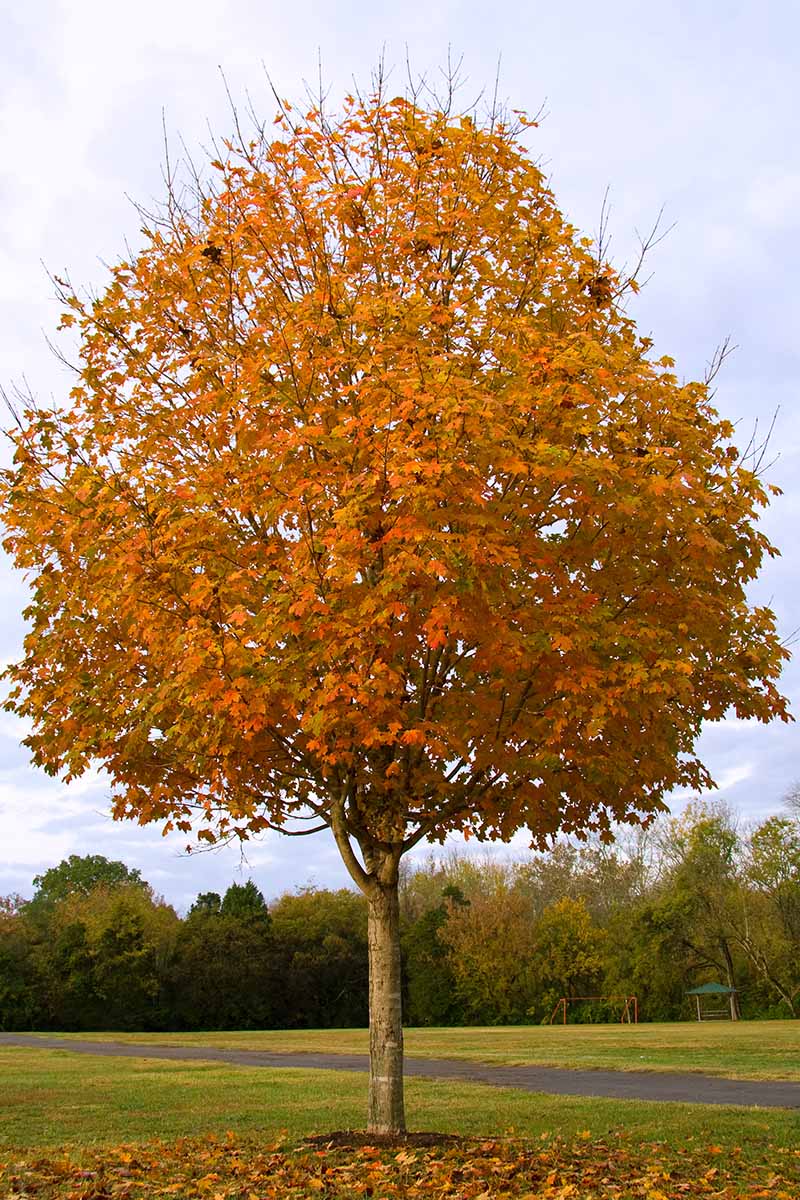

Maples are trees and shrubs in the Acer genus. Japanese maples fall under this category, and we have a guide to help you understand how to raise and care for them if you want details specific to those species.
In this guide, we’ll focus on the genus more broadly.
In addition to the Japanese species (primarily A. palmatum, A. shirasawanum, and A. japonicum), red (A. rubrum), sugar (A. saccharum), silver (A. saccharinum), bigleaf (A. macrophyllum), and paperbark (A. negundo) are the most common species in North America.
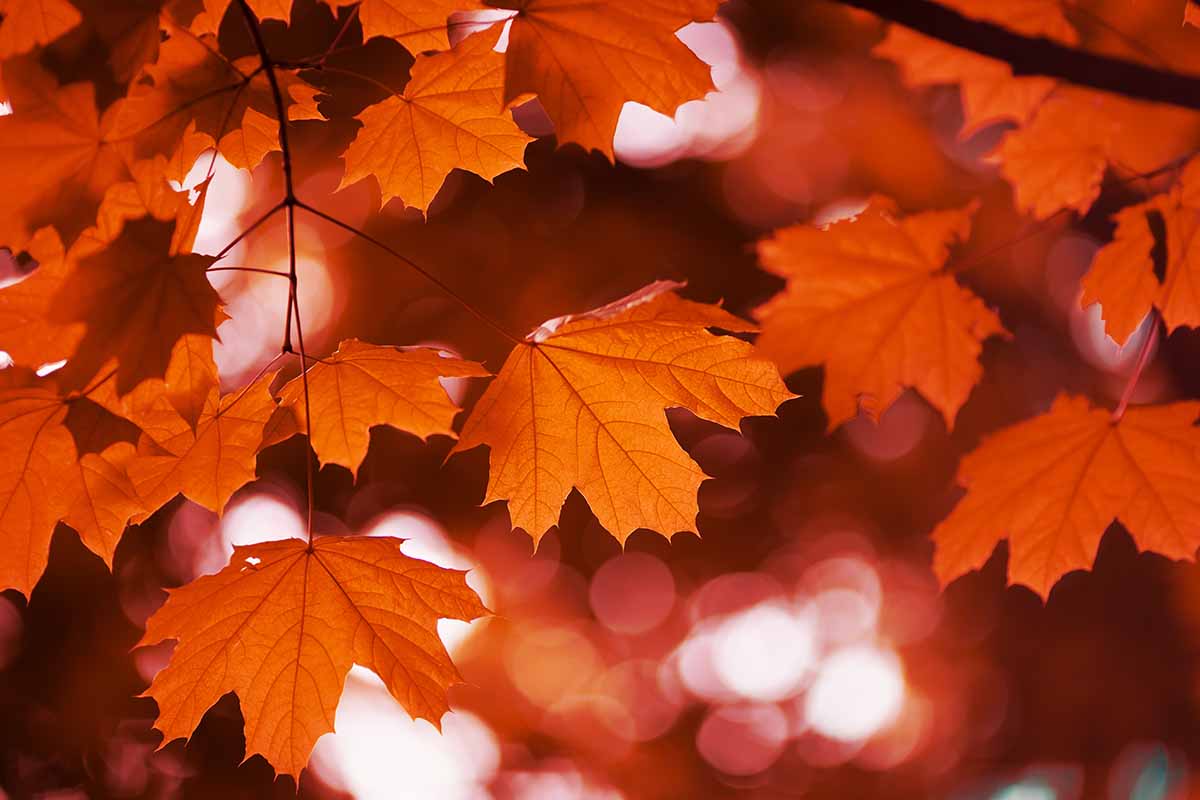

You may also see vine (A. cissifolium), Norway (A. platanoides), Amur (A. ginnala), hedge (A. campestre), hornbeam (A. carpinifolium), sycamore (A. pseudoplatanus), bigtooth (A. grandidentatum), and Tatarian (A. tataricum) maples.
These varied species can range in height from just a few feet, in the case of Japanese cultivars, to over 150 feet, as with the bigleaf type.
Leaves can be tiny and so serrated they look like lace, or mind-bogglingly massive, like the 20-inch-tall and equally wide bigleaf maple that nabbed the record in the Guinness Book of World Records in 2010.


While there can be some extreme variation, most maple leaves have a similar shape that characterizes the genus.
They’re all pinnate, which means the leaves have veins emerging from a central line, and they’re all sinuate, which means the margins are wavy. Most are simple and have five lobes.
Most of these plants also produce winged fruits called samaras or samaroid schizocarps, depending on which botany resource you ask.
When you think of maple leaves you might imagine a Japanese, sugar, or red type, which are the most typical. Something like the leaf on the Canadian flag, right? But there always has to be someone who wants to stand out from the crowd.


In this case, the hornbeam is your guy. It has ovoid leaves without the lobes. Boxelder and paperbark maples also differ in their appearance. These have a compound leaf comprised of three leaflets.
Cultivation and History
Japanese maple species have been cultivated for an extraordinarily long time, since at least the seventh century.
North American species weren’t cultivated until more recently, though they were invaluable to native people who used sugar and bigleaf maple sap to make syrup and sugar for both food and medicine.
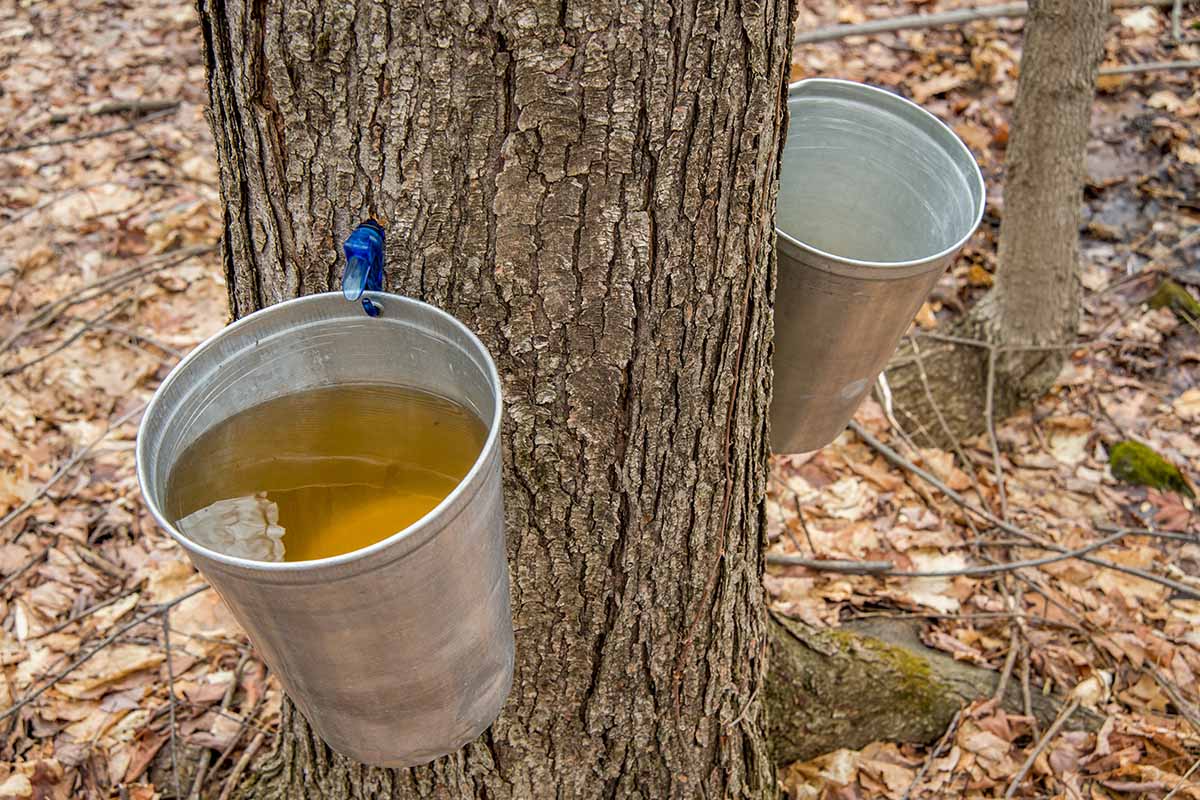

Of course, they also used the wood to make tools, boats, and paddles, and the leaves of larger-leafed species as temporary containers. Europeans use maple to build all kinds of furniture and in flooring because the wood is hard, long-lasting, and relatively straight.
Today, the most commonly cultivated maples in North America are the red, silver, and Japanese species, but we’re starting to see a lot more options out there. There are trees that grow everywhere from USDA Hardiness Zone 2 to Zone 10.
Propagation
There are lots of ways to propagate maples. Air layering is common where people are attempting to restore populations of trees that have been decimated by fire or pests.
Growing from seed is less common in home gardens, but totally doable if you’re patient and plan ahead.
From Seed
It is possible to grow some varieties from seed. Many hybrids are sterile or won’t grow true, but most cultivars and species plants will grow well from seed.
You can purchase seeds or collect your own from an existing tree. The seeds are ripe and ready when they either start falling off on their own, or have turned a brown color with a papery, dry texture.
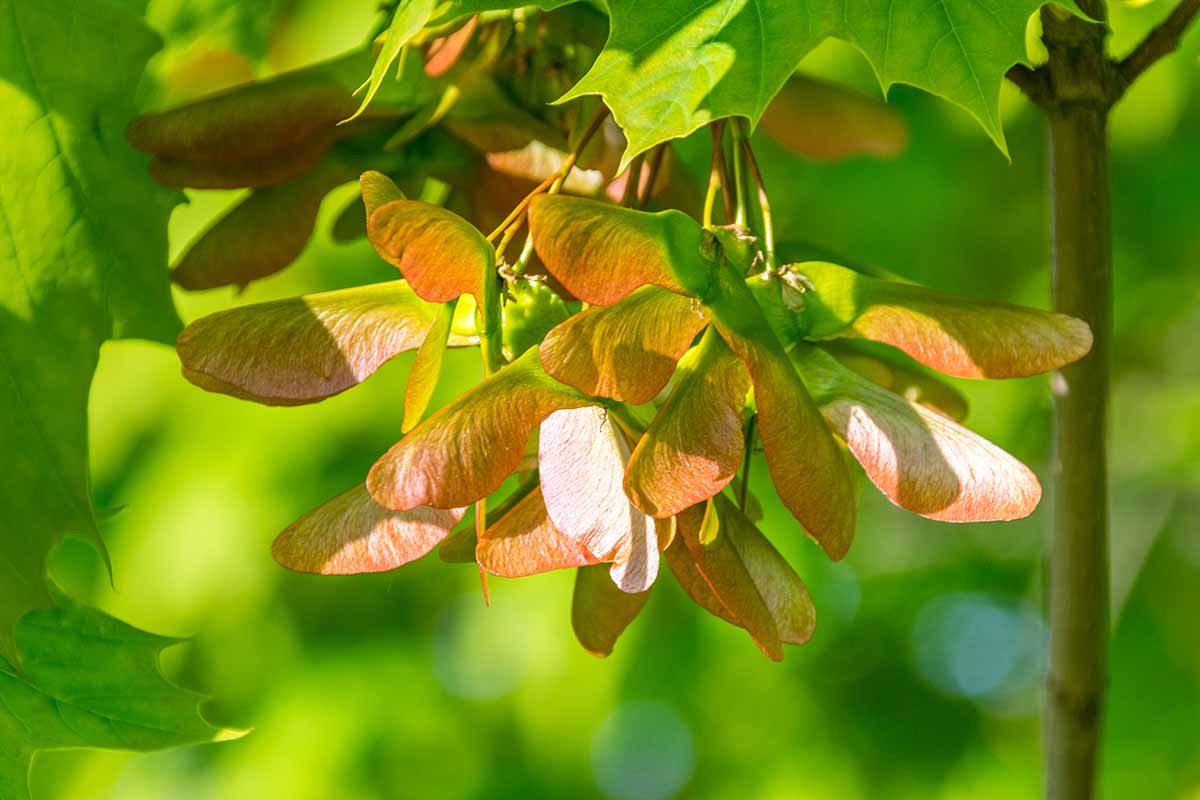

Break off the wings and soak the seeds in room temperature water for 24 hours before planting.
If you’re planting a species that requires cold stratification, place the seeds in a moist mixture of equal parts sand and vermiculite in a resealable plastic bag or jar, and put it in the refrigerator. Keep the medium moist.
The amount of time that the seeds must be kept cold varies depending on the species.
If you’re not sure if your species requires stratification or for how long, try reaching out to your local extension office.
A broad rule of thumb is to stratify bigleaf seeds for about three months. Paperbarks require about four months. Many sugar, red, and silver types don’t require stratification, but some do. These generally need about three months.
Because most seeds should be planted in the spring, start your stratification work in the early winter. You can also plant the seeds directly in the garden in the fall and let nature do the work. Prep the soil by working in lots of well-rotted compost.
Alternatively, fill six-inch pots with a soilless potting mix and sow one seed per pot. If you prefer, you can sow two seeds per pot and remove the weaker seedling after germination.
Seeds should be sown about half an inch deep. Water well and keep the medium moist until the seedlings emerge. At that point, you can reduce the amount of water you provide slightly.
Keep the seedlings in a spot that receives direct sunlight for about six hours per day.
Transplant when the seedlings have at least four true leaves.
From Stem Cuttings
Growing maples from stem cuttings is fairly straightforward but they can be a little difficult to root. Take at least twice as many cuttings as you hope to grow so you aren’t left in the lurch if some of them fail.
First, fill a six-inch container or prepare a spot in the yard where you’re going to grow the plant.
You want to propagate your cuttings in loose, loamy, rich soil. Standard potting soil will work, or average garden soil with lots of well-rotted compost mixed in.
Poke a hole in the soil using a pencil or your finger.
Look for a young, pliable branch and cut a piece about 10 inches long at a 45-degree angle. Cut away all the leaves except a few at the top.
Dip the cut end in rooting hormone and place it in the hole that you made. The cutting should sit with about a third of its length below the soil and two-thirds above. Firm the soil up around the cutting and water well.
Now, you need to support the cutting as it takes root.
That means ensuring that it receives at least six hours of sun per day with some protection during the warmest part of the day. You should also water the soil frequently enough that it feels like a well-wrung-out sponge.
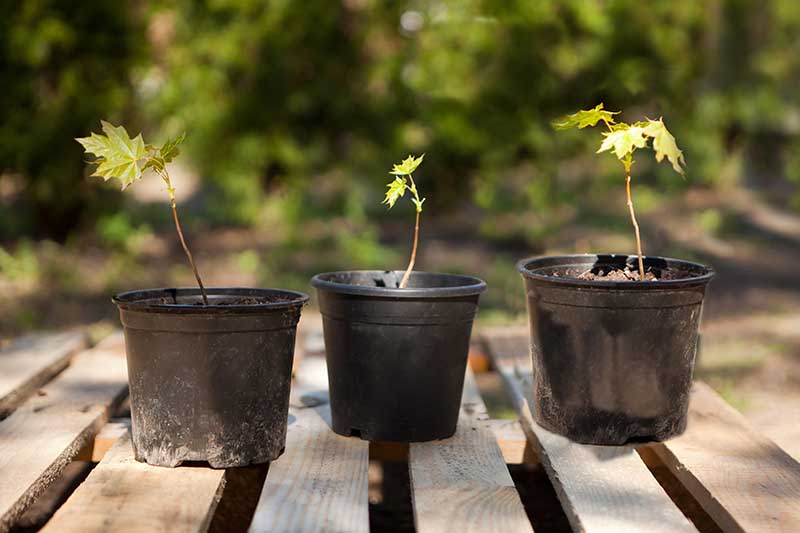

Once roots have formed, you can transplant the new tree if you started your cutting in a container.
It typically takes a few months for new roots to form and you don’t want to dig up the plant to see if they’re forming, so just wait about six weeks and then give the cutting a gentle tug. If it resists, it’s developing roots. If not, wait a few more weeks before testing again.
For cuttings propagated in the ground, a sure sign that your cutting took root is the appearance of new foliage. At that point, you can treat it as any other young tree.
From Simple Layering
If you want an exact replica of an existing tree, layering is the way to go. Seeds are unpredictable, which can be part of the fun. But if you absolutely love a tree or have a sentimental attachment to it, you probably want to propagate a clone.
Many maples, though not all types, will form adventitious roots wherever a lower branch comes in contact with the soil. Big leaf and vine are two of the common species that will do this.
With simple layering, you need to have young branches growing near the ground to make this work. Otherwise, proceed to the next section and propagate via air layering instead.
In the spring after the last projected frost date, gently bend a young, pliable branch to the ground and heap dirt over the center of it. Keep the mound moist until you start to see new growth emerging out of the mound.
Once the new tree has a few leaves on it, clip the branch away from the parent tree as close to the new stem as you can.
Dig the new plant out of the ground and gently shake away all the soil. Plant as you would a transplant.
By Air Layering
All maples can be propagated via air layering.
In the spring after the tree has fully leafed out, look for a branch with at least the diameter of your pinkie finger. It should be young with new growth rather than old and woody.
At the base of that branch, gently scrape away the bark and the cambium layer in an inch-long section going around the entire circumference.
The cambium is the inner green layer just underneath the bark. Beneath it is the center of the tree, known as heartwood, which is typically light brown or yellow.
Wrap the branch in moist sphagnum moss followed by several layers of plastic wrap. Secure each end with duct tape or zip ties.
Now, take up a new hobby for the next three to four months while you wait for Mother Nature to do her thing. Eventually, you’ll start to see a bunch of roots forming in the moss. That’s the time to act. Use a pair of clippers to remove the branch from the tree.
Clip the top of the branch back so the whole thing is under a foot long. Plant as you would a transplant and wait for the magic to happen.
By Grafting
This method is most commonly used for Japanese maples, but any Acer species can be grafted.
Grafting is often done to combine the best characteristics of two different cultivars or species. For instance, growers tried grafting sugar maple (A. saccharum) scions onto salt-tolerant sycamore maple (A. pseudoplatanus) rootstock to make a more salt-tolerant sugar maple.
If you’d like to try grafting at home, you want to work with the current season’s new, green growth. That means sometime in late spring or summer, depending on where you live.
Choose a healthy, pliable branch that is at least six inches long and cut it off two-inches below a leaf bud. This is your scion. Slice two inches off the opposite sides at the bottom of the branch at an angle to create a V shape.
Cut off the top of a branch of the rootstock tree with a straight cut. The branch needs to be at least an inch in diameter. Use a hatchet to cut a slice at least an inch down the center of the branch. Gently insert the scion as deep as you can.
Wrap the union with grafting tape, which you can purchase at Amazon in packs of three.
From Saplings
If you want to go the old reliable method of buying a plant, it’s a faster way to go from no tree to a big, mature one. It’s also more expensive, but not all of us have existing maples that we can take cuttings from.
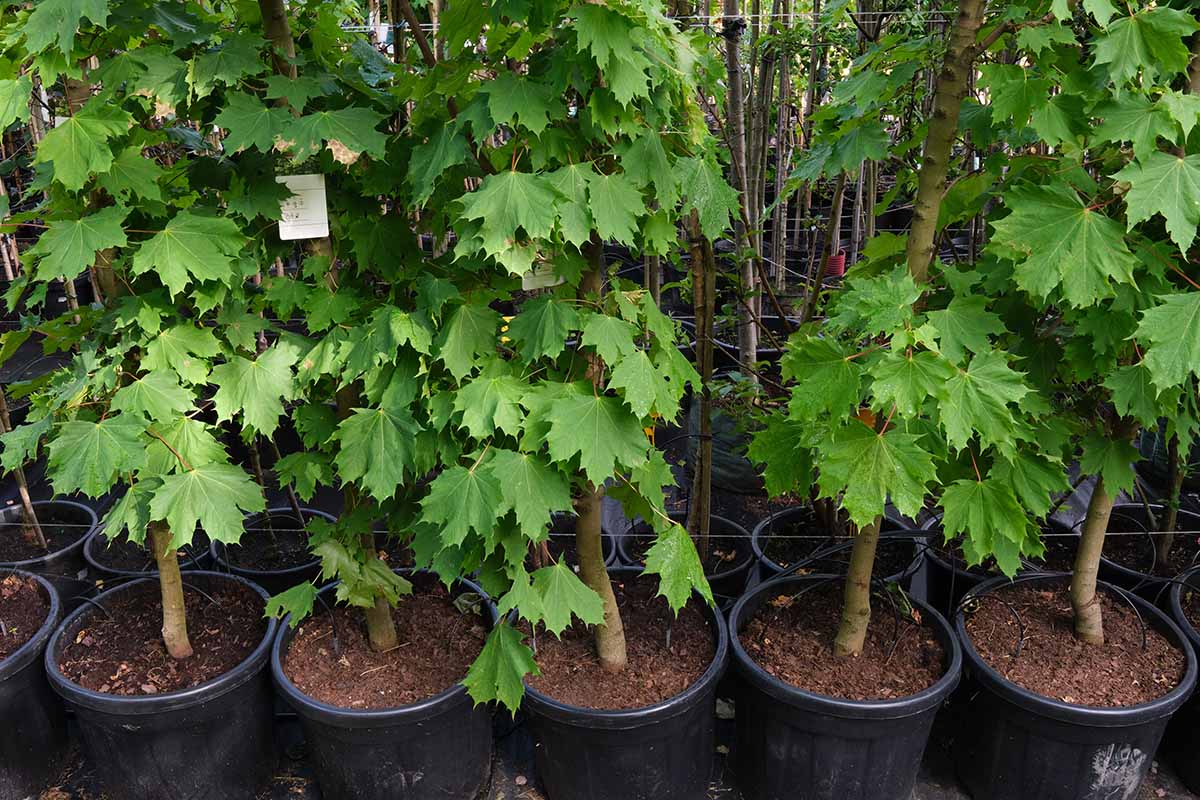

To transplant a potted plant, the most important thing is to prep the area well first. You’ll save yourself a lot of heartache down the road if you do the work ahead of time.
Unless you have naturally well-draining, loose, rich soil, you’re going to want to work in some well-rotted compost. Work it down at least twice as deep and wide as the pot your plant came in.
Then, dig a hole slightly wider and deeper than the pot and gently remove the tree from its container.
Loosen up the roots, remove any excess soil, and place it in the hole. If you’re planting a grafted tree, make sure that the union is just above the soil line. Firm the soil around it and water well.
How to Grow
Almost all maples need somewhat moist, well-draining, loose, loamy soil. They don’t do well in sandy or rocky soil. All types prefer a pH between 5.0 and 7.0.
Reds can handle somewhat clayey soil. Some species, like paperbarks and vines, even do well in wet soil and can be used in runoff or rain collection gardens.
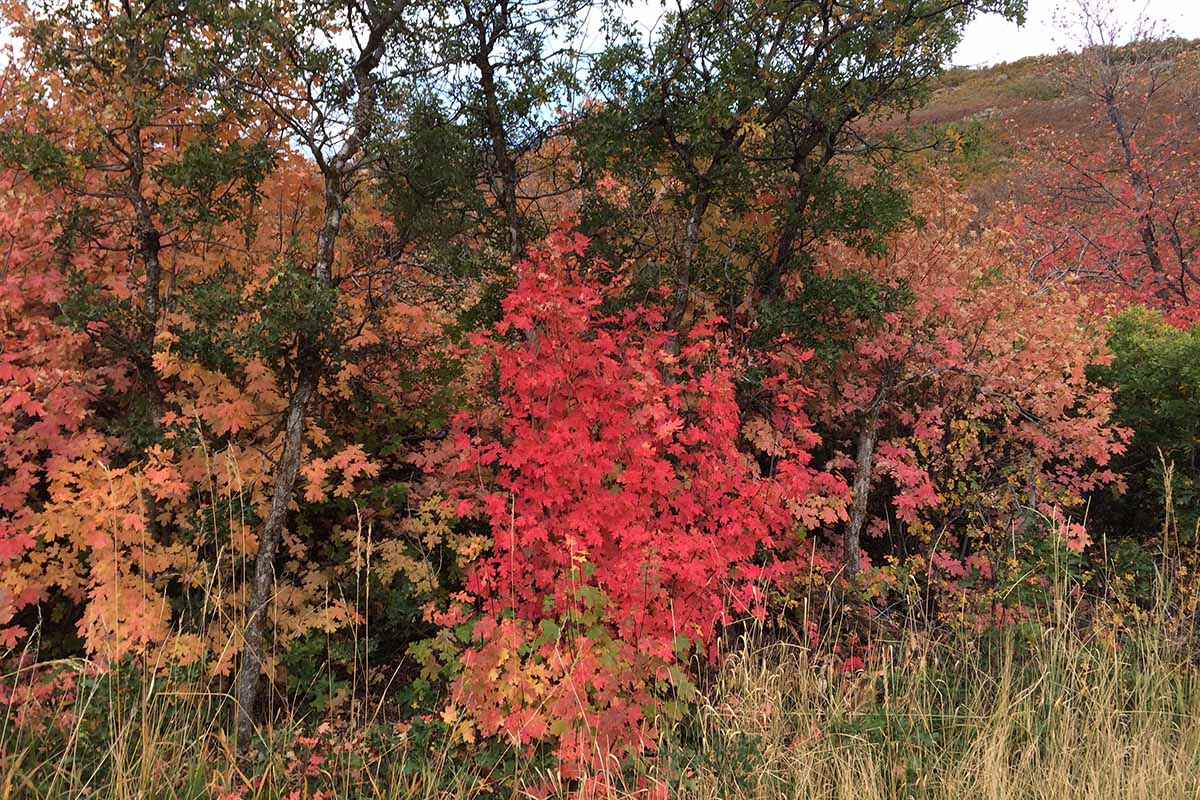

For the most part, these aren’t plants for xeriscaping or gardens that experience a lot of drought. But, of course, as you may have suspected, there are a few outliers.
Bigtooth maples grow in areas where drought is a regular occurrence and you can find them growing wild in many parts of the dry western US.
Though certain trees may be able to tolerate adverse conditions, they should receive regular moisture and not be allowed to dry out much more than a few inches below the surface of the soil.
They will send out roots to search for moisture, which means they will generally take care of themselves once they mature. But it also means that if they aren’t receiving enough water, they’ll go find it. That might mean tapping into your sewage or septic system.
The soil around young plants should be kept moist for the first year or two after planting.
Most do well in full sun, but a few – like vine maple and some Japanese types – need partial sun or shade.
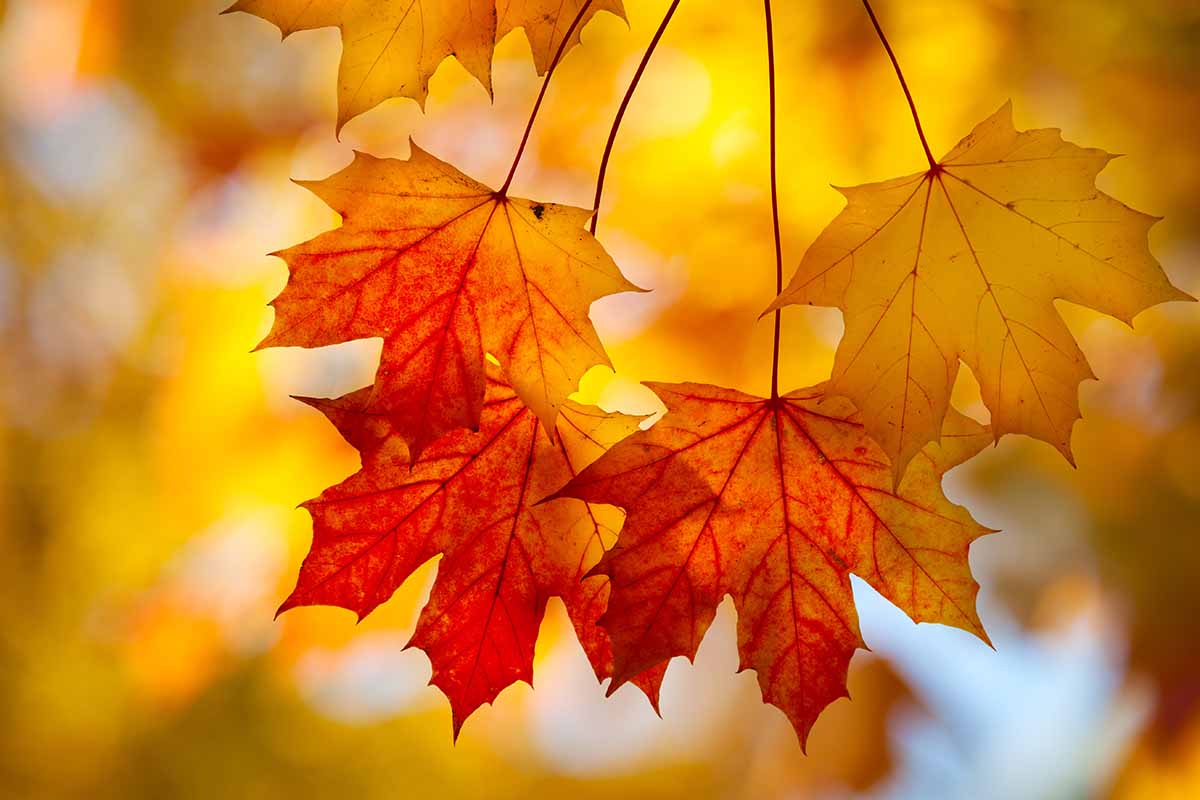

Having said that, most are fairly adaptable. If you start them young, they’ll do a pretty good job of adjusting to whatever conditions you offer. Just keep in mind that maintaining ideal conditions ensures happy, healthy plants.
Because these are long-lived trees and many types will grow to be very tall, make sure you pick a spot for yours that won’t quickly become too small.
Your little sapling might look adorable growing a few feet from your house now, but give it 20 years and you’ll be singing another tune – one that probably involves a lot of swear words…
There’s no need to fertilize after the first three years, but when the tree is young, give it some extra love in the form of a granular, all-purpose fertilizer applied in the spring.
Something like Dr. Earth’s Root Zone starter is ideal.
Grab some at Arbico Organics in a one- or four-pound container. Follow the manufacturer’s directions for the amount to apply.
Growing Tips
- Grow in slightly acidic to neutral soil that is well-draining.
- Keep soil moist when plants are young.
- Plant in full sun to partial shade, depending on species.
Pruning and Maintenance
Maples are marvelously low maintenance. Essentially, all you need to do is thin yours out if the crown becomes overly crowded, and take off any dead or diseased bits. Otherwise, you can prune to give it some shape or just let it do its thing.
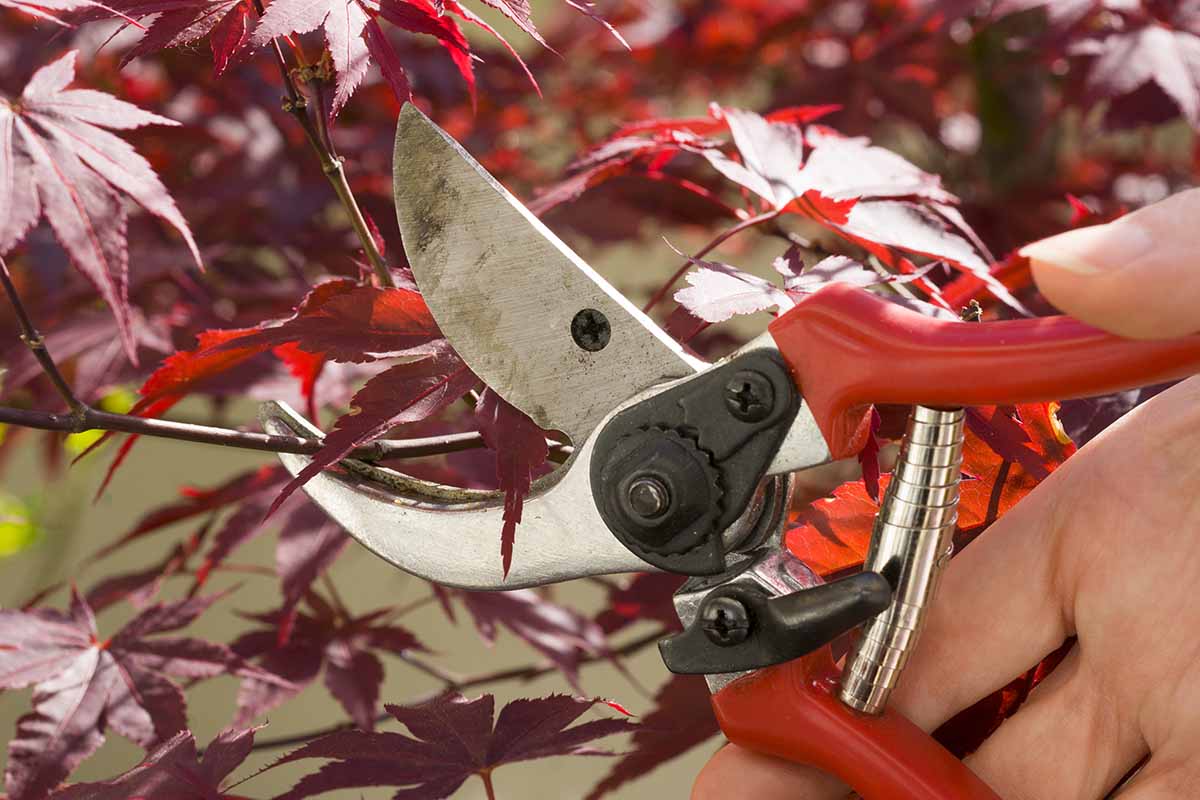

Always use clean clippers to prevent spreading disease and prune in the early spring as the leaves are emerging. If you need to do a small amount of pruning, any time of year is fine.
Don’t be alarmed if sap leaks from the cuts in the fall and winter. That’s totally normal, and there’s no need to use anything to seal the cuts.
Species and Cultivars to Select
It’s always smart to talk to an expert at your local nursery or an extension office agent to figure out what grows really well in your area.
But so long as you can provide the right environment, you can choose from a huge selection of trees. Here is just a small sampling of what’s out there:
Armstrong Gold
With its tidy columnar shape and tightly fastigiate growth habit – which means the branches grow upwards, parallel to the stem – this A. rubrum cultivar is begging to be tucked into a corner or grown with friends as a living border.
It grows up to 40 feet tall but with a spread of just 12 feet at the widest point and shows off with its yellow and gold foliage during the fall. In the spring, you’ll be greeted by cheerful red flowers and samaras, followed in summer by light green foliage.
Pop on over to Fast Growing Trees to get your hands on this beautiful tree. They carry it in various sizes, including two to three, three to four, four to five, five to six, and six to seven-foot saplings.
Autumn Blaze
If you like red maples, this one is the crown jewel. In the fall, the leaves are an intense, vibrant red and look like they’re positively glowing. It’s extremely eye-catching and sure to draw comments. During the rest of the year, the foliage is bright green.
‘Autumn Blaze’ aka ‘Jeffersred’ has a fairly fast growth rate, along with great disease resistance.
If you live in Zones 3 to 8 and you have room for a tree that reaches up to 50 feet tall and 40 feet wide, you can make ‘Autumn Blaze’ a part of your landscape.
Head to Fast Growing Trees to grab a three to four, five to six, or six to seven-foot-tall sapling.
Celebration
Acer x freemanii ‘Celzam,’ aka Celebration, is a hybrid of a silver and red maple. These hybrids are called Freeman’s maples and they feature the fast-growing tendency of silvers combined with the sturdiness and color of reds.
This cultivar has a compact growth habit in a loose columnar shape and bright orange and red leaves in the fall.
This tree grows up to 50 feet tall and is hardy in Zones 4 to 8. Make it a part of your yard by nabbing one at Fast Growing Trees.
You can choose from three- to four-foot, five- to six-foot, or six to seven-foot-tall specimens.
Crimson King
A stunning Norway cultivar, A. platanoides ‘Crimson King’ is cloaked in regal purple foliage all summer long. While other maples can give you the same coloring, this one maintains its hue even in northern climates, which is unusual.
It grows up to 50 feet tall with a narrow growth habit, and does well in Zones 4 to 7.
Fast Growing Trees carries this majestic maple sapling in two to three, three to four, four to five, five to six, and six to seven-foot heights.
Flame
This Amur (A. tataricum) cultivar could almost be called a shrub because it stays under 20 feet tall and wide. It has a compact, rounded shape that makes it perfect for adding a little privacy or division to your yard.
Need something that can fit under power lines? Plant this gem in Zones 3 to 8.
In the fall, you’ll be treated to a show of bright red foliage, while in the spring, the tree will be covered in white flowers.
Fast Growing Trees has ‘Flame’ in one to two, three to four, and four to five-foot foot saplings.
Paperbark
Paperbarks (A. griseum) provide year-round interest. With orange-bronze foliage in the fall, petite white flowers in the spring, and luscious green foliage all summer, they’re always offering up something beautiful.
But it’s the bark that really stands out. Rather than falling off, the bark peels away from the stem, creating an elegant texture that is particularly impressive during the cold months. Place an uplight underneath it and this species becomes a real showstopper.
Because paperbarks are slow-growing and difficult to propagate, they can be hard to find in stores. Luckily, Nature Hills Nursery carries this eye-catching wonder in the eight-to 10-foot sapling size.
Sun Valley
Drought tolerant, cold hardy, insect and disease resistant, and intensely colorful, this A. rubrum species cross between perennial favorites ‘Red Sunset’ and ‘Autumn Flame’ is a red worth seeking out if you live in Zones 4 to 8.
Its symmetrical growth habit, showy red flowers and samaras, and dense growth habit are just bonuses.
Pick up a four- to five-foot tree in a #3 container at Nature Hills Nursery.
Managing Pests and Disease
Herbivores like deer leave these trees alone, for the most part – though young plants are always a bit susceptible to grazing.
The good news is that large, established trees are resilient enough to withstand some nibbling on their leaves.
Insects
When maples are growing in the right environment, they’re wonderfully unbothered by pests. The exception is those that are being devoured by pests like gloomy scale – what a name, right?
Let’s take a look at a few of the top culprits.
Aphids
Aphids and plants evolved together, and where a plant grows, a specialized aphid species is usually pretty sure to follow.
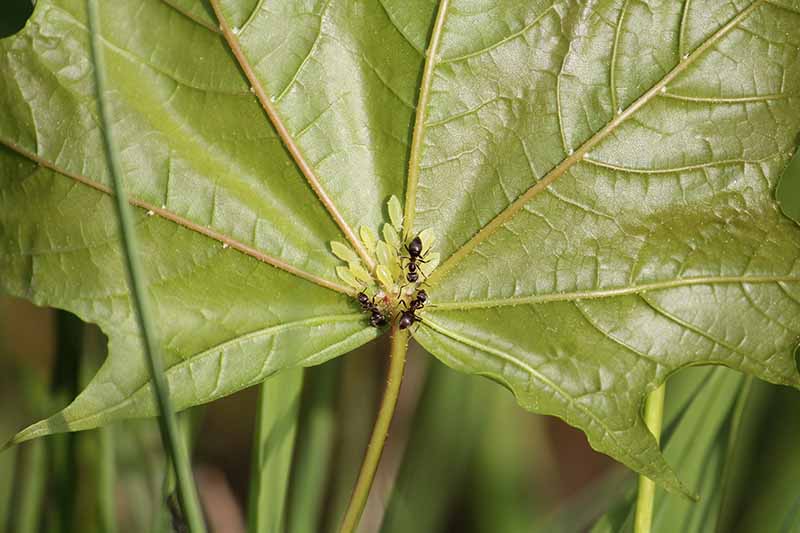

While there are several species that feed on maples, the woolly alder aphid (Paraprociphilus tessellatus) is particularly pernicious. It looks like a little ball of fuzz with a blackish-gray base, slowly crawling along the stems and leaves of the plant.
However, despite its unusual appearance, many people don’t notice they have an infestation until they park or sit under the tree and discover a sticky substance all over the place called honeydew.
If that happens to you, pop on over to our guide on aphids to learn all about what to do.
Scale
I don’t know what it is that scale insects like about maples, but like them they do.
There are lots of species that feed on maples, but most commonly in North America, you’ll see cottony maple scale (Pulvinaria acericola and P. innumerabilis), and gloomy scale (Melanaspis tenebricosa). It’s the latter that is destroying maples across the country today.
Gloomy scale is a native insect, but populations have only recently become a major issue in the US because they thrive in heat and drought-like conditions. As the climate warms and urban areas expand, these conditions are becoming more prevalent, and so are gloomy scale infestations.
In reality, it doesn’t matter which species visits your yard. They all look somewhat similar and do the same type of damage.
Looking more like a symptom of disease than a bug at first glance, since you can’t see their legs, they’re quite flat, and they stay fairly stationary. The cottony type has a fluffy white covering while gloomy scale insects are gray with an armored shell.
Our guide can walk you through identifying and eradicating this common pest. Horticultural oil applied during the dormant season is one of the best methods of control.
Disease
If you plant your maples in the right spot, the likelihood of disease is pretty low.
Anthracnose
This fungal disease, caused by Aureobasidium apocryptum (syn. Kabatiella apocrypta), Discula campestris, and Colletotrichum gloeosporioides, is most common in the springtime, when you’ll start to see black, purple, or brown splotches or streaks on the leaves in between the veins.
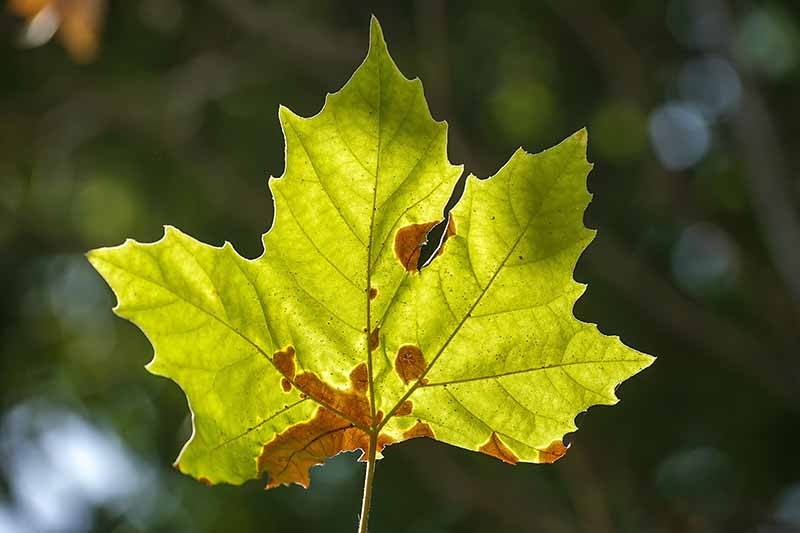

Young or stressed trees may become completely defoliated and die, but older trees will usually be fine, if a little uglier.
For the most part, you can trim away infected leaves or branches. However, a young tree or one that is continually defoliated year after year needs chemical intervention. This requires a two-pronged approach.
The first step is to spray the tree with a copper fungicide.
You can pick up Bonide Copper Fungicide at Arbico Organics in 32-ounce ready-to-use, 16- or 32-ounce hose end, or 16-ounce concentrate containers.
After that has dried, drench the tree in a product that contains mancozeb.
You can find Bonide Mancozeb Flowable available via Amazon in 16-ounce containers.
Reapply both of these every two weeks throughout the spring.
Bacterial Leaf Scorch
This isn’t an issue caused by sitting out in the hot sun for too long, though maples can sometimes become sun-scorched, too.
It’s actually caused by a bacteria (Xylella fastidiosa), and affected leaves will look similar to those burned by overexposure to the sun. Spread by pests and grafting, it’s most common on drought-stressed trees.
Look for yellowing or brown, dry leaves that may fall from the tree. Entire branches may die, and while an older tree may survive an infection, a sapling might not.
Unfortunately, there is no known cure. Infected plants are best removed from the garden.
Tar Spot
Tar spot is a good name for this disease because that’s what it looks like as the infection progresses. Leaves appear to have been splattered in tar, covered in lumpy, raised black spots.
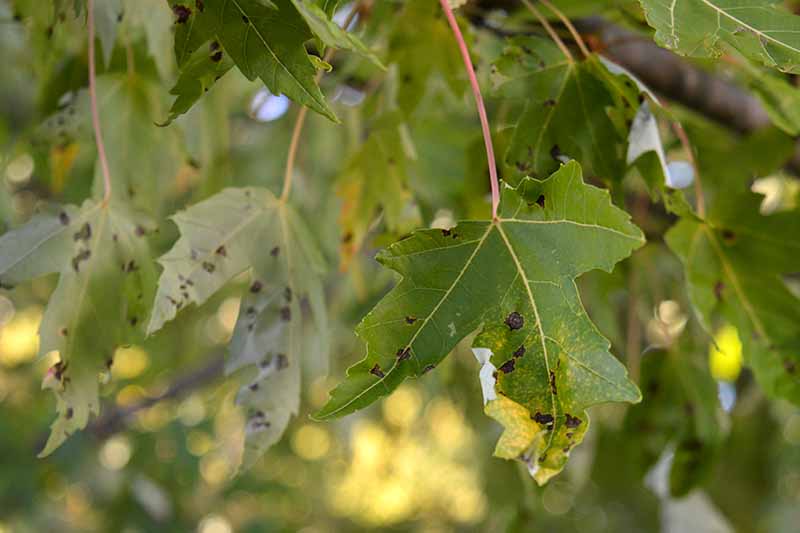

The disease is caused by fungi in the Rhytisma genus. Though infected trees are harmed in terms of aesthetics, it’s not usually a threat to the tree’s life.
Tar spot can also cause the leaves to drop, which can be a more serious problem in young or unhealthy trees.
Before these spots turn tar black, they show up as small yellow spots in the early summer.
Remove any infected leaves or branches, if you can, when you see them and your tree should be fine. With young maples, apply copper fungicide every two weeks while symptoms are present.
Verticillium Wilt
Of all the diseases that attack maples, this is the most important one to watch out for. It can kill a tree in mere months, even a mature, previously healthy one. This fungal infection, caused by Verticillium dahliae, can be acute or chronic.
In chronic infections, the trees will be stunted. Leaves may be smaller than usual or crinkled and yellow. In acute infections, the leaves may turn yellow between the veins and then drop from the tree.
As an acute infection progresses, entire branches may die and, eventually, the whole tree.
There is no way to treat this disease because the fungus lives in the soil for up to 10 years, and there is no effective antifungal that is strong enough to treat all of the soil around a mature tree.
As long as your tree is showing mild symptoms, you can leave it in place.
If your tree becomes unsightly or dies, remove it and don’t plant anything else there that is susceptible to vert for at least a decade.
Best Uses
From teeny-tiny bonsai specimens to massive shade trees, maples are pretty versatile.
Columnar types can be used as windbreaks or divisions between properties. Smaller trees can be planted in containers or used as focal points in the garden, while larger trees are excellent for shade.
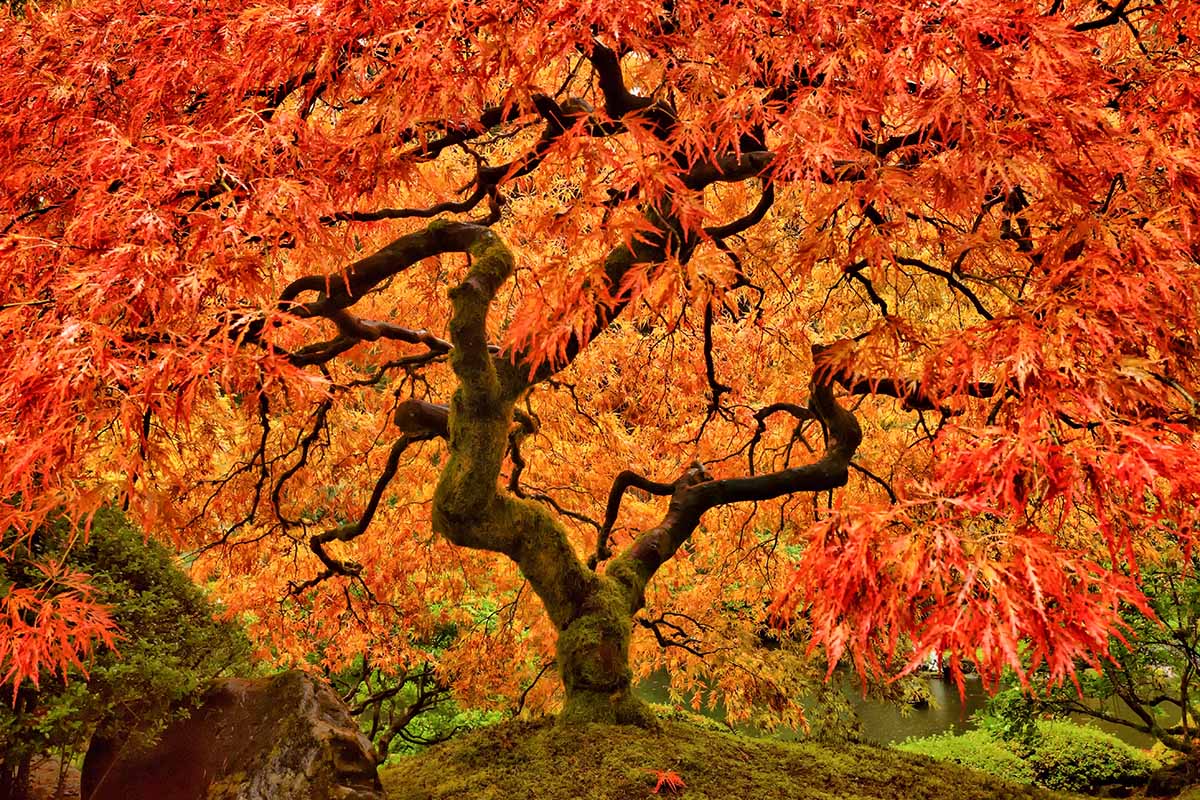

Paperbarks are ideal for spaces that need some winter appeal, and you truly can’t beat a red cultivar for some fall excitement.
Bigleaf and sugar maples can be tapped to harvest their sap, which is then used to create syrup or sugar. Bigleafs, though less appreciated in the syrup world, have a longer harvest season and the syrup has a richer, darker, more molasses-like flavor.
Quick Reference Growing Guide
| Plant Type: | Deciduous tree | Foliage Color: | Pink, silver, yellow, green, red |
| Native to: | Asia, Europe, North America | Tolerance: | Some drought, some excess moisture |
| Hardiness (USDA Zone): | 2-10, depending on species | Soil Type: | Loamy, loose |
| Season: | Spring- fall | Soil pH: | 6.0-7.0 |
| Exposure: | Full sun to full shade, depending on species | Soil Drainage: | Well to moderate, depending on species |
| Time to Maturity: | Up to 30 years | Attracts: | Birds |
| Growth Rate: | Slow to moderate, depending on species | Companion Planting: | Agastache, flowering bulbs, hostas, begonias, lungwort, hellebores |
| Planting Depth: | 1/2 inch for seeds, depth of root ball (transplants) | Avoid Planting With: | Crocus, columbine, foxglove, lily of the valley |
| Spacing | 5-25 feet, depending on species | Uses: | Bonsai, specimen, containers, windbreak, shade tree, syrup |
| Height: | Up to 150 feet | Order: | Sapindales |
| Spread: | Up to 50 feet | Family: | Sapindaceae |
| Water Needs: | Moderate | Genus: | Acer |
| Common Pests and Disease: | Aphids, scale; Anthracnose, bacterial leaf scorch, tar spot, Verticillium wilt | Species: | Campestre, carpinifolium, cissifolium, ginnala, grandidentatum, japonicum, macrophyllum, negundo, palmatum, platanoides, pseudoplatanus, rubrum, saccharum, saccharinum, shirasawanum, tarticum |
Make Maples a Part of Your Space
From towering trees to shrub-like options, maples run the gamut.
They also offer up some of the most intense color that you can find in a tree. No doubt you’ve spotted a blazing red maple in the fall and marveled at the display. People drive for miles to catch a glimpse of the autumn maples in New England, after all.
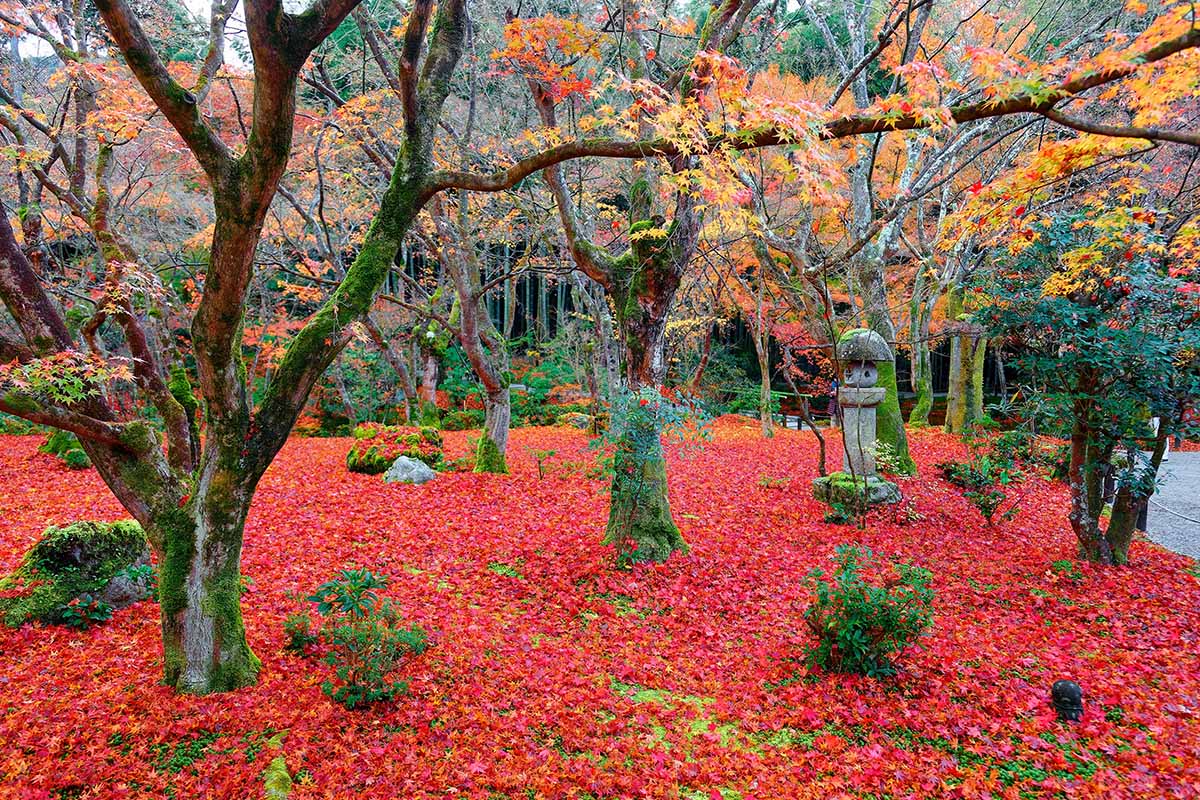

But you don’t need to travel if you plant one in your own yard. Which species are you planning to bring home? Let us know in the comments.
And if you want to expand your knowledge of landscaping trees to add some variety in your garden, you might be interested in the following:


